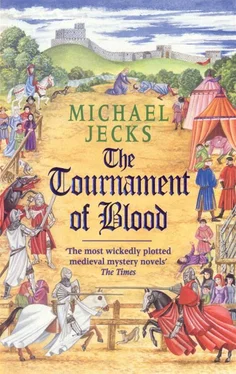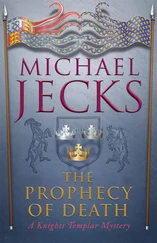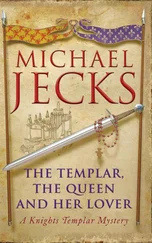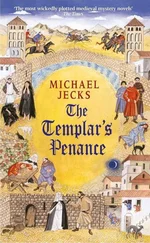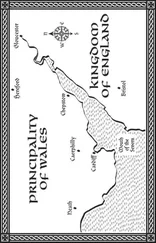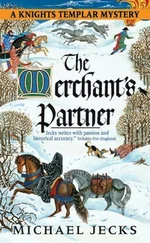This form of limited warfare was conducted under the rules of battle then in force – which more or less suggested it was bad form to execute a prisoner because he was worth more alive – and combatants used real weapons of war. No weapon was banned. Swords and axes were sharpened; maces and clubs, lances and bills were all wielded. Not surprisingly, this resulted in severe injuries and, commonly, death. One of the better-known tournaments was between the British and French at Châlons-sur-Saône in 1273, during which the Count of Châlons caught Edward I about the neck in an attempt to pull him from his horse. Edward apparently deprecated such treatment and lost his temper. So did others. Before long the competitors were joined by their foot-soldiers, and a pitched fight was carried on in earnest. As a result of the deaths and injuries that ensued, this has gone down in history as ‘The Little Battle of Châlons’.
Bloodshed was no doubt one of the reasons why the Church set its face against all forms of tournament, but other objections weighed heavily too. The Church disliked the fact that tournaments encouraged dangerous knightly passions: lust and greed. Still, the idea of condoning deaths in the field was not a happy one for bishops or popes. They banned tournaments.
The ban was extensive: no participant could be buried in consecrated ground if he died in the lists. However, this prohibition cannot have succeeded because the Church had to keep repeating the message regularly. We know that knights who died in tournaments were routinely buried within churches, cathedrals, graveyards and elsewhere – with supportive churchmen holding the services. Eventually the Church had to give up and permit tournaments once more.
There were, in fact, good reasons why the Church rescinded the ban in 1316. Acre had fallen, meaning that the Kingdom of Jerusalem was lost. It was essential, in the minds of many of the Christians of this time, that a strong force of knights and men-at-arms should be trained for war in order that they could participate in a new Crusade.
The same opinion did not strike so much of a chord with kings throughout Europe. When great lords declared themselves keen to hold tournaments, gathering together all their adherents and peers, trouble could soon follow. For instance, after he had signed Magna Carta, King John’s nobles got together and began plotting against him during a tournament.
It is noticeable that strong kings supported tournaments, no doubt seeing in them a means of keeping warlike lords occupied and training up youngsters, while weaker monarchs tended to ban them, fearing, like King John, that the motivation for holding them was more to hatch plots and treason than for the delight of getting beaten about the head by an axe-wielding lunatic on a heavy horse.
British kings, in turn disliking and then promoting tournaments, were far too worldly to think that the Church’s prohibition could succeed, so monarchs from Richard I onwards began a tradition followed by successive governments: when in doubt, tax it . A fee was charged to hold a tournament, and all those attending must also pay on a scale according to rank.
There were attempts to prevent injuries; Richard I’s ordinance was itself partly intended to reduce the butcher’s bill. Edward I improved on the safety aspect by requiring participants to swear to keep the peace – and pay for their licence up front! He also restricted the number of followers that men could bring with them, insisting that grooms and footmen should be unarmed, that squires alone should be allowed to join their lords for feasts, and that all weapons should be bated, or blunt. This was known as fighting with arms à plaisance , rather than weapons of war, which was called à outrance. Béhourds , in which men fought with padded leather armour and non-metallic weapons, were popular with the knights; the garments, one imagines, being a great deal lighter and cooler than full armour.
It was at this time that the social aspect of tournaments developed: they became pageants, with market stalls, feasting, dancing and acting on offer for the elite. Expectations of the sports altered and new methods of running tournaments had to be thought up.
Just as today people turn up in their thousands to watch a boxing match or motor race, in the medieval period people wanted to go and watch their heroes battle it out. When the course could be anything up to some ten miles long and wide, when all the fighting could take place anywhere within those hundred square miles, it was hard for spectators to see the action – and possibly hazardous too. Far better that the action should be contained in a smaller area, that fighters should be roped off, or stands built for fans, with all the business being presented before them.
To do this, the old system of mêlée had to change. Fights started being contained within a ‘ring’ of sorts, with stands all about. But this was not all. Now, with the growth of chivalrous stories such as those of King Arthur, men wanted to have an opportunity of showing their personal courage and skill. That was impossible in a seething mass of fighting bodies, so the individual tilts began to develop – and as they developed, so rules were designed for them. There was a gradual move away from the massed battle towards the more civilised joust. Only gradually, of course, because in this bloodthirsty age people wanted to see death and mayhem, but there was a move to have tournaments over several days, with jousting acting as a warm-up for two, three or four days, leading to the grand finale of the mêlée . One assumes it would have been impractical to reverse this: the knights would all have been sore and probably deaf after the mêlée .
King Edward II was always very keen on tournaments: his favourite, Piers Gaveston, was a talented fighter, by all accounts. However, Edward was soon persuaded that tournaments were inherently dangerous and he should not allow them to continue. This was because 289 knights met at Dunstable for a tournament during which they co-ordinated their grievances against Gaveston, which were then related at the following Parliament in the April of 1309. Again, in 1312, a tournament was used as the excuse for a gathering which allowed rebels against Gaveston to raise an army. After this, Edward set himself against any tournaments until 1323 when he submitted to the wishes of his brothers and permitted one.
This being the case, the reader may be surprised that I have decided to set my tournament in 1322. It is even more surprising when one realises that under Richard I’s law, only some five specific fields up and down the country were to be used: they were near Salisbury, Stamford, Warwick, Brackly and Blyth. None was near Okehampton.
However, if there is one thing which is clear about history, it is the fact that nothing is clear . Even if one hears that hard and fast rules were imposed, one soon learns that the opposite is recorded. When I began to conceive this story, I read of Edward II’s ban on tournaments and was going to try to make the story fit his brothers’ event of 1323, but then I heard of a knight who had been forced to flee from a joust and beg for a pardon because he accidentally killed his opponent in 1318 . This clearly happened during Edward’s ban, and equally clearly the location (Luton) wasn’t a site selected for licensed tournaments.
I believe that the evidence shows that the kings never intended to stop all training for knights. The intention of the royal prohibition was to prevent great multitudes of grandees gathering and plotting the current monarch’s downfall. Thus Edward would not have wanted Earl Thomas of Lancaster and the Earl of Pembroke to meet with all their men because the two were powerful and could unite against him – but a lesser baron like Hugh de Courtenay was not in the same league, and if Edward wanted Hugh’s men to help in the King’s host, should Earl Thomas rebel (as he did), obviously the King would want Hugh’s men to be capable of serving him. Therefore I believe that limited ‘training’ tournaments went on all the time; they were marginally less expensive for participants and were probably looked upon as handy for keeping rural knights and squires in training. England certainly had need of trained fighters – as she has all through history. It is only in the last fifty years that the British Government has become so fearful of its own subjects that successive Parliaments have banned target pistols, shotguns, target rifles, and even pea-shooters.
Читать дальше
